Achyranthens Aspera is an erect, many-branched, spreading, and quadrangular herb that lives several years. The plant can grow up to 6 to 7 feet tall, commonly known as chaff flower, prickly chaff flower, or devil’s horsewhip. The plant and its all parts like root, seeds, leaves, roots, flowers, and fruits have been used for medicinal purpose; 21 leaves of the Achyranthens Aspera regularly used in Ganesh Patra pooja on Ganesh Chaturthi.
The leaves of Achyranthens Aspera are simple, hairy, shorty stalked. The leaves have two colors, i.e. yellowish below and green above, situated opposite each other on a sharp-pointed woody stem. The leaves are 8 to 10 cm long, 7 to 8 cm wide with a broad base and pointed tip like an egg. Achyranthens Aspera has small green/yellowish-white flowers that form narrow, long spikes; it grows up to 60 cm long.

By the time flowers bend towards the stem, in the fruiting stage, The bracts around the flowers become sharp, pointed tips making the heads spiny to the touch, fruits are orange to reddish-purple or straw-brown capsules.
Table of Contents
Morphology of Achyranthens Aspera
Flower-it has yellow, green/white flowers with long, axillary spikes, flowering throughout the year. In axillary, elongated spikes; yellowish-white in color. Flowering throughout the year.
The fruit easily sticks to clothes and animal skin. It has a solitary seed-fruiting throughout the year. Stem having longitudinal ridges/grooves with hairy nodes.
Sources of Achyranthens Aspera
Achyranthens Aspera is mainly found in tropical Asian, African, and warmer regions. It is also found in Australia and America, Ceylon, and Baluchistan. In India, it predominantly grows like a weed on roadsides.
Achyranthes Aspera or Chaff flower, is highly nutritious and has caloric value. Based on some studies, it might have anti-diabetic activity and can be useful in managing diabetes.
Dr. Siddharth Gupta, B.A.M.S, M.D (Ayu)
Chemical Components of Achyranthen Aspera
The Achyranthen Aspera is stated to contain the following major classes of compounds:
- Fatty acids.
- D-glucuronic, Betaine.
- Oleanolic acid, triacontanol.
- Spathulenol, alkaloids.
- Achyranthine, different amino acids.
- Ecdysterone.
- Oleonic acid.
- Bisdesmosidic, triterpenoid-based saponins.
- Spinasterol, dihydroxy ketones.
- n-hexacos-14- enoic.
Nutritional Constituents
Achyranthes Aspera plant and seeds are rich in carbohydrates, proteins, and bioactive constituents such as flavonoids, tannins, and saponins that help maintain an individual’s overall health.
Other Names for Achyranthens Aspera
The plant is known by different names in various parts of the world.
- In Hindi, it is known as Puthkanda, Latjira, Chirchira, Lamchichra, Sonpur.
- In Marathi, it is known as Aghada.
- In Sanskrit, it is known as Apamargah.
- In English, it is known as Chaff Flower.
- In Punjabi, it is known as Kutri.
- In Kannada, it is known as Gorwiballi, Karihambu.
- In Tamil, it is known as Naaiyuruvi, Naagarkaai Mullu.
- In Telugu, it is known as Uttaraene.
Traditional Uses of Achyranthes Aspera
- The pulp of fresh Achyranthens Aspera leaves, and flowering spikes is an effective home remedy for scorpion bites when applied externally, which is believed to paralyze.
- For snake/reptile bites, the seeds are beneficial for ophthalmic diseases and other corneal infections.
- Flowering, elongated spikes mix with little sugar and used in mad dog bites to treat hydrophobia.
- Achyranthens Aspera ash loaded with potash has been used for washing clothes.
- Flowers and fruits of Achyranthens Aspera are useful for the treatment of menorrhagia.
Medicinal Uses & Benefits of Achyranthens Aspera
- All parts (seeds, roots, leaves) of Achyranthens Aspera have been used both traditionally and medicinally; it has a strong unpleasant smell used externally or internally.
- The Achyranthens Aspera having expectorant, stomach tonic, laxative, anthelmintic, diuretic, lithotriptic, sudorific, demulcent, anti-inflammatory, anticataract, antifungal, antibacterial, hypoglycemic, antihyperlipidemic, antiperiodic, antiasthmatic, hepatoprotective, anti-allergic properties s it aids to treat various health issues.
- Achyranthens Aspera plant supplements help remove excess body fat by preventing accumulation in the abdomen; gluteal regions control body weight.
- Achyranthens Aspera juice has ropan (astringent), and anti-inflammatory properties; therefore, it is used in ulcers/wounds for faster healing.
- Achyranthens Aspera root paste and juice help to lower the pain, reduce itching, skin rashes in insect bites, and urticaria when applied topically and helpful in earache.
- Daily consumption of Achyranthens Aspera supplement powder with honey improves digestion.
- Achyranthens Aspera has excellent digestive and appetizing properties, with the help of keeping digestion to keep the body healthy.
- In Ayurveda, a unique medicine called Achyranthens Aspera (Apamarga ash) is very effective externally for fistula and fissure.
- Achyranthens Aspera oil is predominantly used to expel excessive cough in the body & gives relief from cough.
- Achyranthens Aspera has a purgative quality, which helps to soften stool and lowers the risk of constipation, piles, and fistula/fissures.
- When Achyranthens Aspera taken orally breaks down calcium oxalate calculi by its Tikshna property, it expels out by increasing urine output (diuretic).
- Achyranthens Aspera mix with tankana bhasm and lemon juice. This mixture is used to remove warts, but this procedure can burn the skin. Therefore it is advisable to do this process under doctor consultation.
- Achyranthens Aspera is rich in potassium, so it keeps the heart-healthy.
Based on some research, Achyranthes aspera or Chaff flower might possess anti-fertility properties and might play a positive role in an unwanted pregnancy. However, its use should be in moderation and only after taking a professional opinion.
Dr. Rajeev Singh, BAMS
Precautions While Using Achyranthens Aspera
- Achyranthens Aspera paste is used with caution since it may cause skin irritation, and rashes over the skin. Therefore it is better to use it along with some cooling substances like ice.
- The excessive intake of Achyranthens Aspera supplements can cause nausea, and vomiting.
- During pregnancy and breastfeeding situations, it is very much advisable to take Achyranthens Aspera under the supervision of a medical practitioner.
- For children below 12 years, taking or giving Achyranthes Aspera supplements are not advisable.
Frequently Asked Questions (FAQs)
Yes, traditionally, Achyranthens Aspera is used for prolonging menstrual flow, abnormal menses, and dysmenorrhoea. But there is no scientific evidence to prove this effect.
Yes, Achyranthes Aspera supplements effectively wound healing due to the tannins, which are known to pose astringent and anti-inflammatory properties. Achyranthens Aspera supplements can help improve blood flow to the wound area, which led to the contraction of the wound. This synergistic effect can help to fasten the wound healing process.
Yes, Achyranthes Aspera supplement is used to treat the ulcers as they are composed of a mixture of anti-ulcer and gastroprotective bioactive compounds. Achyranthens Aspera supplements can lower the volume of gastric juice and total acidity and thereby increase the pH of gastric juice. This togetherly helps in managing ulcer-related problems.
Conclusion
Achyranthes Aspera is a traditional and essential medicinal herb or weed all over India. Almost all the parts (seeds, roots, and shoots) of Achyranthes Aspera are used to prepare traditional medicines. Traditional healers highly value the Achyranthes Aspera plant.
Achyranthes Aspera is used in the treatment of boils, asthma, in facilitating delivery, bleeding, bronchitis, debility, dropsy, cold, colic, cough, dog bite, snake bite, scorpion bite, dysentery, earache, headache, leukoderma, renal complications, pneumonia, and skin diseases.
Read more about: Aloe Vera: Uses, Benefits & Side Effects
Disclaimer: The information provided here is for educational/awareness purposes only and is not intended to be a substitute for medical treatment by a healthcare professional and should not be relied upon to diagnose or treat any medical condition. The reader should consult a registered medical practitioner to determine the appropriateness of the information and before consuming any medication. PharmEasy does not provide any guarantee or warranty (express or implied) regarding the accuracy, adequacy, completeness, legality, reliability or usefulness of the information; and disclaims any liability arising thereof.
Links and product recommendations in the information provided here are advertisements of third-party products available on the website. PharmEasy does not make any representation on the accuracy or suitability of such products/services. Advertisements do not influence the editorial decisions or content. The information in this blog is subject to change without notice. The authors and administrators reserve the right to modify, add, or remove content without notification. It is your responsibility to review this disclaimer regularly for any changes.



 By
By 



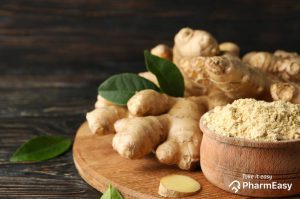

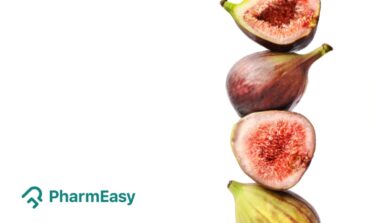




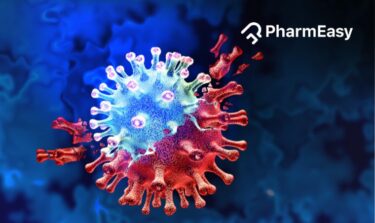
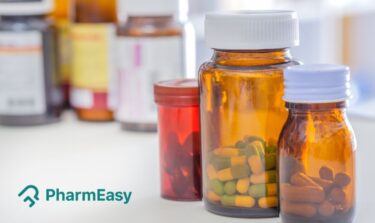
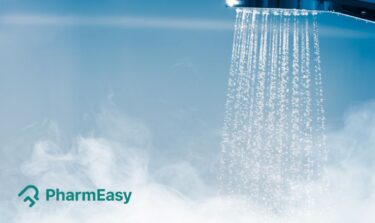

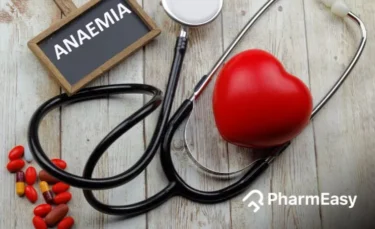
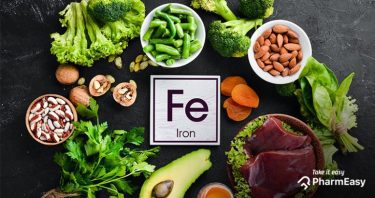





Comments